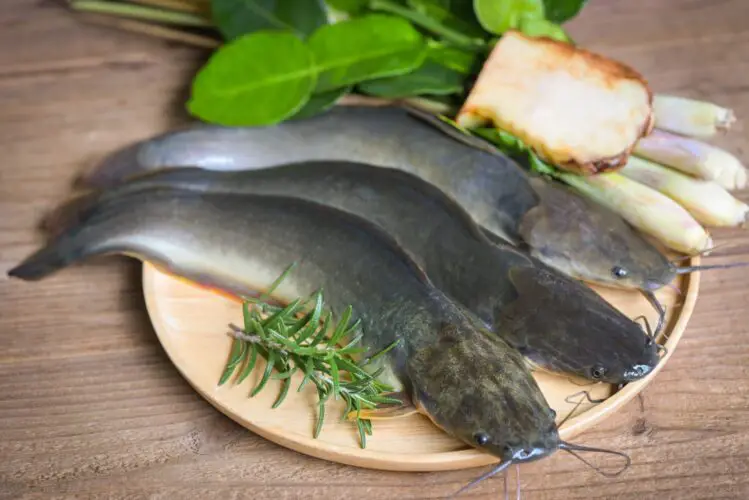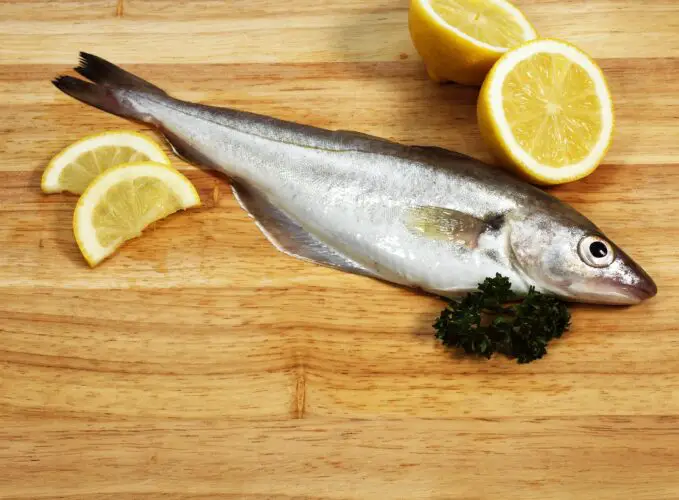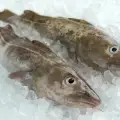A catfish and whiting differ in distribution, habitat, appearance, diet preferences, and feeding methods. There are similarities only in the taste of their meat and some aspects of their diet. This article will compare the differences between the two fish species.

Habitat and distribution difference between Catfish and Whiting
Catfish and whiting fish are found in different habitats and have different distributions. The details are discussed below:
Catfish Habitat and Distribution
Catfish are mostly freshwater fish. Their primary habitat includes rivers, lakes, ponds, and swamps of various sizes. Some catfish species can be found inhabiting brackish or saltwater, so they can also be found in estuaries and coastal areas.
There are several catfish species, so their distribution is also ubiquitous. This includes the Mississippi River basin, including Mississippi, Louisiana, and Arkansas; the Amazon River basin in South America; the Congo River in Africa; the Mekong River in Southeast Asia, to name a few.
Different species are abundant in other places. For example, the channel catfish is native to North America and particularly plentiful in the United States and Canada. The blue catfish can be abundant in the Mississippi River basin and other large river systems in the southern United States.
In South America, you’ve got the Pictus catfish which is native to the Amazon and Orinoco River basins and found mainly in Brazil, Peru, Colombia, and other South American countries.
Then there’s the Redtail Catfish distributed throughout the Amazon and Orinoco River systems.
The electric catfish can be found in rivers and lakes of sub-Saharan Africa. The Wels catfish can be found in countries like Germany and Ukraine. The Striped catfish can be found in Vietnam, Thailand, and Cambodia but is native to the Mekong and Chao Phraya Rivers basins.
Whiting Habitat and Distribution
On the other hand, whiting is commonly found in the coastal waters of the Northern Hemisphere, so their distribution is much more limited compared to catfish. They are usually found in saltwater regions and inhabit sandy and muddy seabeds, open oceans, estuaries, shallow bays, and reefs. You’re less likely to find catfish and whiting in the same places.
For example, European whiting is found in the northeastern Atlantic Ocean, particularly along the coasts of Europe, from Norway to the Mediterranean Sea. In contrast, the Pacific whiting is located along the eastern Pacific Ocean, particularly along the shores of North America, from Alaska to Baja California.
How to Distinguish Between Catfish and Whiting?
In terms of outward appearance, there are many differences between catfish and whiting.
Body Shape
Several notable differences can be observed in catfish and whiting body shapes. Catfish usually have a bulkier and more muscular body compared to whiting. Catfish also possess a broader head and a larger mouth, whereas whiting of the same age and similar size would have a smaller head and mouth.
Depending on the species, catfish are known to have varying body shapes. Some species have a flattened and broader body, like the flathead catfish, while others have a more streamlined one, like channel catfish. Generally, the most commonly seen body shape is elongated and cylindrical.
In contrast, whiting typically shows a slender and streamlined body shape. Their back is moderately arched, and the body is overall elongated. So it is easy to distinguish them from a catfish.
Coloration
Most catfish species generally display a predominantly brown, gray, or olive coloration. Since they are predatory fish, this body color helps them blend into their surroundings while looking for prey. Some species further display a mottled or speckled pattern on their body, which allows them to camouflage themselves. Others may exhibit a more uniform coloration without any marks, such as pure brown or gray.
Catfish coloration also varies among species. For example, the flathead catfish tends to have a light yellowish-brown or olive-brown body color, filled with mottled patterns. Again, the redtail catfish has a distinct reddish-orange tail fin and fins with contrasting black and white patterns all over their body.
Unlike catfish, there isn’t that much variation in the body color of Whitings. Usually, they are predominantly silvery or grayish in color, with variations being limited to only the tone and intensity of it. This kind of coloration enables them to blend into their marine habitat, providing a form of natural camouflage for them.
The dorsal side of their body is usually darker than the ventral side, ranging from a bluish gray to a brownish-gray tone. The lateral line appears as a translucent stripe, while the fins often shade lighter than the rest of the body. Younger fish often exhibit a brighter silver coloration, which tends to darken as they mature.
Identifying Characteristics
Catfish can be easily identified by the sensory barbels around their mouth, which appear like cat whiskers and give them their name. They have a stout and muscular body with a robust appearance, and their flattened head is often wider than the rest.
As for whiting fish, their body has a distinct shiny and metallic appearance because of their silvery color. The streamlined body is elongated and slender. Their caudal fins are more pronounced compared to other fins. Moreover, the upper side has a darker coloration than the lower side.
Size and Weight Difference Between Catfish and Whiting
Since catfish are diverse, their average size can range from a few inches to several feet. The catfish species on the smaller side, such as the channel catfish, can reach an average length of around 12 to 24 inches (30 to 61 cm) and weigh between 2 to 5 pounds (0.9 to 2.3 kg).
As for medium-sized species, like the blue catfish, they can grow to an average length of 20 to 40 inches (51 to 102 cm) and weigh between 20 to 40 pounds (9 to 18 kg).
There are also catfish that are super large. The best example is the Wels catfish, native to Europe, which can reach lengths of over 10 feet (3 meters) and weigh several hundred pounds.
A catfish’s largest recorded size and weight is perhaps the Mekong giant catfish, native to Southeast Asia. The largest specimen ever discovered was approximately 9.8 feet (3 meters) long and weighed around 646 pounds (293 kg).
On the other hand, all whitings are moderate-sized fish. On average, their length ranges between 10 to 18 inches, equal to 25 to 46 cm. Their weight is also significantly lesser, ranging from 0.5 to 1.5 pounds (0.2 to 0.7 kg). So they are often smaller than the smallest species of catfish. The largest whitings may reach lengths of around 24 inches at most and weigh up to 3 pounds (1.4 kg).

Diet Difference Between Catfish and Whiting
The diets of aquatic animals are similar to a great extent due to the limited options they have. Yet, there are some notable differences in the diets of catfish and whiting. They are discussed below:
Catfish Diet
Catfish are opportunistic predators, and they are omnivorous. Most catfish species are bottom-dwelling fish whose diet reflects their scavenging and omnivorous nature. The diet of a typical catfish primarily consists of different types of tiny aquatic organisms, including insects, crustaceans, mollusks, small fish, and plant matter.
This diet can also vary at different stages of life. As juveniles, catfish limit themselves to small invertebrates like insect larvae, crustaceans, and small aquatic organisms. As they grow older and more prominent, their diet expands to include more oversized prey items. That’s when small fish and crustaceans are added in.
In some cases, the diet of an adult catfish may become more specialized to include a specific food source, like another fish or crustacean. A catfish also shows cannibalistic nature in adverse situations like lack of food.
There are also some differences noticed in the diet across different species. For example, channel catfish are carnivorous and feed on decaying organic materials. Blue catfish lie more on the carnivorous side and prefer fishes like shad and sunfish.
Whiting Diet
On the other hand, whiting fish are primarily piscivorous. This means that they primarily consume other fish, and that’s what their diet is limited to. So their diet is more restricted than catfish, though they are opportunistic feeders. However, that’s mostly after they achieve full maturity.
Juvenile whiting’s diet is mainly made up of small invertebrates. They feed on planktonic organisms like copepods, krill, and small shrimp-like crustaceans. At this life cycle stage, they are often found in shallow waters near the shore, where these small prey items are abundant.
As whiting fish reach adulthood, their diet shifts to larger prey, mainly consisting of different types of fish. They start by preying on small fish species, such as sand eels, herring, sprat, and other schooling fish. Then they move to the bigger ones in terms of their size.
The difference in the Feeding Habits of Catfish and Whiting
Many catfish species have whisker-like barbels around their mouth, which act as sensory organs to help them locate food by detecting vibrations and chemical cues in the water. They use these barbels to explore food in the substrate. Because of their keen senses, they can detect food in the dark and camouflaged or hidden foods.
They capture their prey using a suction feeding technique, like a vacuum cleaner. Though they are primarily bottom feeders, they are also opportunistic. They will go for whatever they come across and whichever level. They are most active during the night or twilight hours.
The feeding habits of whiting fish have only little similarities with catfish. Whiting fish, as opportunistic feeders, are usually predatory like many catfish species and will actively hunt their prey.
For this, they apply various techniques and strategies. For example, they often come together in groups and form a school when hunting for food sources, as together, they can maximize their efficiency.
Their primary method of catching prey is relentlessly pursuing them until the target is in their mouth. Aside from this, they also use the ambush method, wherein they will hide behind a concrete structure and catch a pray off-guard before capturing them.
Taste Difference Between Catfish and Whiting
The meat of catfish has a sweet and mild flavor. Its texture is firm and dense, yet it remains tender and moist when you cook it right. The flavor profile of the meat is clean, subtle, and somewhat earthy. It has large flakes that separate easily and a smooth, almost buttery aftertaste that will melt in your mouth.
Because of the mildness of the flavor, it is possible to cook catfish in various methods and give your twist to the dish using multiple seasonings. Whether fried, grilled, baked, or used in soups and stews, it’s bound to rock.
There is some similarity in the taste of whiting fish, as it also has a mild sweetness and delicate flavor. While tenderness and flakiness dominate the texture, the flakes are much finer than catfish, and the texture is soft and moist. The flavor tone of it can be compared to cod or haddock. To give justice to the delicate texture of the fish, try sautéing and broiling it.
So compared to whiting, catfish have a more earthy flavor and denser texture with larger flakes. However, it is essential to note that whiting and other related species are plagued by parasites like cod worms that lay eggs in the fish’s body. It would be best if you correctly cleaned the fish before eating it.
Catfish and whiting fish are entirely different in many different aspects. Only when it comes to eating them blind might you confuse them for the similarities in the flavor of their meat, but aside from that, you won’t have any issue distinguishing between the two.











